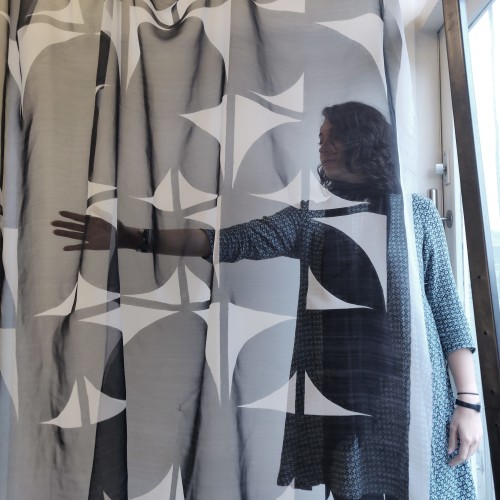For the Museum’s transformation, Petra Blaisse was commissioned to create a custom curtain for the new 120-seat Theater.
Inside, Outside and all the Spaces In BetweenFor over three decades, Architect Jennifer Luce has established a multidisciplinary architectural practice in San Diego, focused on public art projects, urban design interventions, creative workspaces, and collaborations with artists and landscape architects. When the Museum held an open RFP for its renovation, LUCE et studio’s commitment to collaborative work and dedication to craftsmanship made them the clear choice for Mingei.
It seems that before you even began working with the Museum you understood the philosophy of mingei and had unknowingly incorporated it into your practice. Can you share your understanding of mingei?
To me, mingei is the sensibility that inspires thoughtful design with a focus on an intimate experience, textural materials, embellishment meant solely for function, and a humble intent. Materiality and use generate a beautiful idea; an elegant solution (as said of the perfect scientific experiment). Working with the Museum and acquiring a deeper understanding of mingei from Rob Sidner, has informed the way I approached the design for the renovation, turned transformation. We hold the hope that visitors will experience Mingei and sense an optimism. We want them to be inspired by what they see and feel. Even if this is their first exposure to the Museum and they are not aware of the mingei philosophy, they will discover it along the way, over time and through experience, just like I have. Our studio has shared a certain joy in understanding what mingei means and how it affects each of our daily lives in unique ways. It is meditative.









